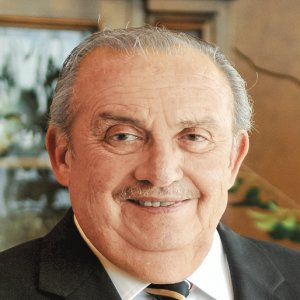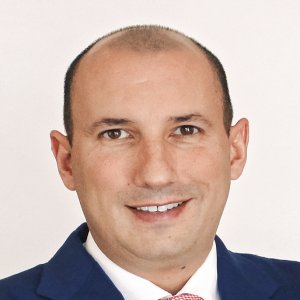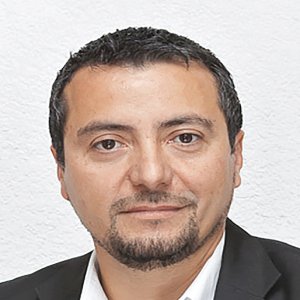Nurturing Aerospace Industry's Growth

STORY INLINE POST
Q: How did Queretaro translate its knowledge of the automotive industry into the development of an aerospace sector?
A: The aerospace industry took notice of our deep involvement with the automotive sector, which requires a large quantity of precision-made pieces. In 2006, Bombardier searched for a location in which to manufacture parts and chose Mexico. Several states started a friendly competition to secure this company for their local manufacturing suppliers but Queretaro was chosen for reasons including its international airport, which had enough space to host an assembly plant.
The government also invested in the state’s education system, creating UNAQ, and spearheading the training of all new technicians that would be needed by budding aerospace industry players. Bombardier began by manufacturing harnesses and gradually transferred several of their suppliers to the state, Aernnova and Safran among them. Safran now has five plants in Queretaro and is developing a sixth. The turbine blades it is manufacturing for Boeing engines using carbon fiber will revolutionize the industry due to the material’s strength and light weight.
Once the state provided the appropriate conditions for Bombardier’s establishment and UNAQ started delivering its courses, we developed a triple helix model for the development of the aerospace industry. Queretaro is now home to about 80 aerospace entities, ranging from OEMs and Tier 1 companies to research centers. An increasing number of universities are offering aerospace programs and this year we will inaugurate the National Center for Aeronautics Technology (CENTA), a project that will require an initial MX$110 million (US$6.4 million) investment. This center will provide material and structure testing, product development and aerospace research, fostering the development of innovative technologies in the state.
Q: What steps is Queretaro taking to support companies that design and develop new technologies?
A: This year Queretaro is among the states that received the largest number of funds from CONACYT’s Innovation Stimuli Program, which is a clear sign of the state’s commitment to innovation. The state has 47 research centers and 623 researchers in the National Researchers Network (SNI). Our ultimate goal is to stop importing technology and to design it locally. Queretaro’s companies and industry do not want to remain a manufacturing hub, they hope to advance to added value activities and higher levels of technological development.
Q: How do the automotive and the aerospace industries complement each other?
A: These industries are different but highly complementary. Automotive is volume oriented while aerospace is market oriented, a difference that allows them to coexist perfectly. Queretaro has evolved through many industries, starting in food production and evolving into biotechnology, however all industries in the state, including home appliances, auto parts and software, keep growing. Queretaro’s greatest advantage is that it has many different economic areas and if any was to slow down the state or a company could switch its focus.
Q: How is SEDESU helping the development of Queretaro’s supply chain and identifying other problems to tackle?
A: One of SEDESU’s main programs for 2016 is the creation of a shelter to support local suppliers throughout the development process, from incubation to construction or acquisition of infrastructure, so they can approach potential clients. We also are implementing training programs for many areas such as certification, which is among the main barriers for companies interested in entering the aerospace industry. Many companies need certifications to acquire clients. Alongside Queretaro Aerocluster, we are working to facilitate this process by training these companies in the certification process.
Among other areas we plan to develop are the acquisition of the newest technologies and the generation of training programs that teach technicians to use emerging technologies. The aerospace industry requires specific welding processes that are not generally used by other industries. Queretaro produces 3,500 engineers every year, which gives the state a competitive advantage, but several processes need specialized technicians. SEDESU is developing education programs for these together with the state’s Ministry of Education.
Q: What strategies is SEDESU implementing to attract foreign aerospace companies?
A: Queretaro is becoming a magnet for foreign companies in many sectors thanks to the local government’s efforts, including enforcing safety, increasing competitiveness by granting companies specific spheres of responsibility and generating training programs for their workers. Many foreign companies have bet on the local industry by investing resources in Queretaro.
To attract investment, SEDESU visits foreign aerospace and automotive companies to promote the state. However, our best promoters are the companies that are already incorporated and operating in the state. For instance, Safran’s announcement of the construction of a sixth plant in Queretaro speaks highly of the state’s infrastructure and human capital. Many other companies also are increasing their operations in the state and building more manufacturing plants.
Q: How is Queretaro balancing competition and cooperation with clusters in other states?
A: Recognizing that every cluster has its own individual strengths means that together we can promote the growth of the aerospace industry in Mexico as a whole because all the foreign investment that these clusters can capture is beneficial for Mexico. Cooperation from all the states is necessary to form a large, single cluster that unites the country. This would grant greater access to new technologies and processes, training programs and plans to attract companies. The industry is more interested in cooperation and healthy competition because what is good for every other state is good for Queretaro.
Q: What strategy does the local government need to implement to strengthen the sector?
A: The next step is to consolidate local aerospace industry. We have already attracted many companies and are now working on the development of these suppliers and new technology. Strengthening the supply chain will allow the consolidation of Mexican industry, which will in turn strengthen the country to better handle the economic changes that Mexico is facing, such as the devaluation of the peso. Under these economic conditions it is common for interest rates to rise, hurting companies and thus the economy. To consolidate the aerospace sector, and every other sector, this year we will launch a financing program for any company that may need it. We managed a different financial project alongside the Commission for Economic Promotion of Business in the Industrial, Commercial and Service Sectors of Queretaro (COFESIAQ), which was instrumental in the exponential growth of the aerospace industry. SEDESU is developing guarantee funds from the state government alongside state industrial development lender NAFIN and through the Employment Promotion Trust (FIPROE). This program will provide loans at very low rates to support innovation.
Q: What is your long-term vision for the aerospace industry and what steps is the state planning to implement in the short term to achieve it?
A: In the short term, our goal is to develop the supply chain by increasing the number of Mexican certified suppliers for this industry. In the middle term, our goal is for these suppliers to sell to all of Mexico and to other countries so that, in the long term, the aerospace industry is consolidated in the state and can continue leading the industry. Queretaro as a state receives the largest amount of foreign direct investment in Mexico and is fifth worldwide in global aerospace investment. Maintaining this position will be a challenge. Our ultimate goal is to fully develop and fly an aircraft.























